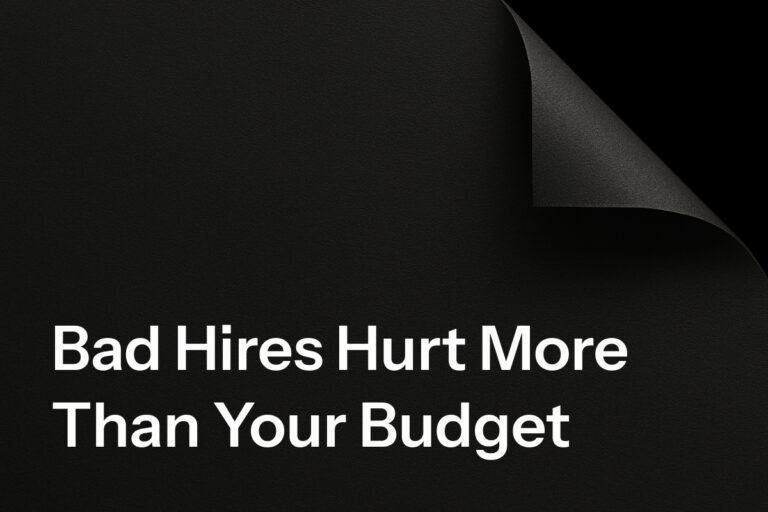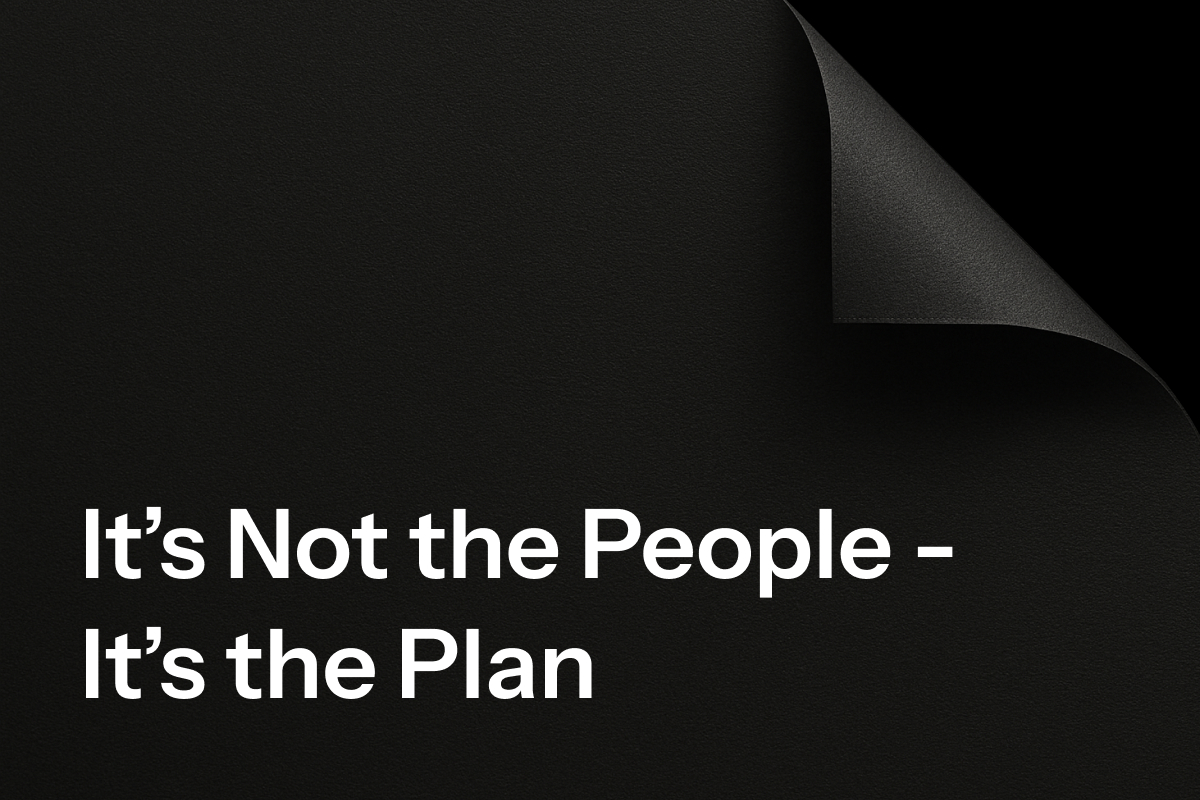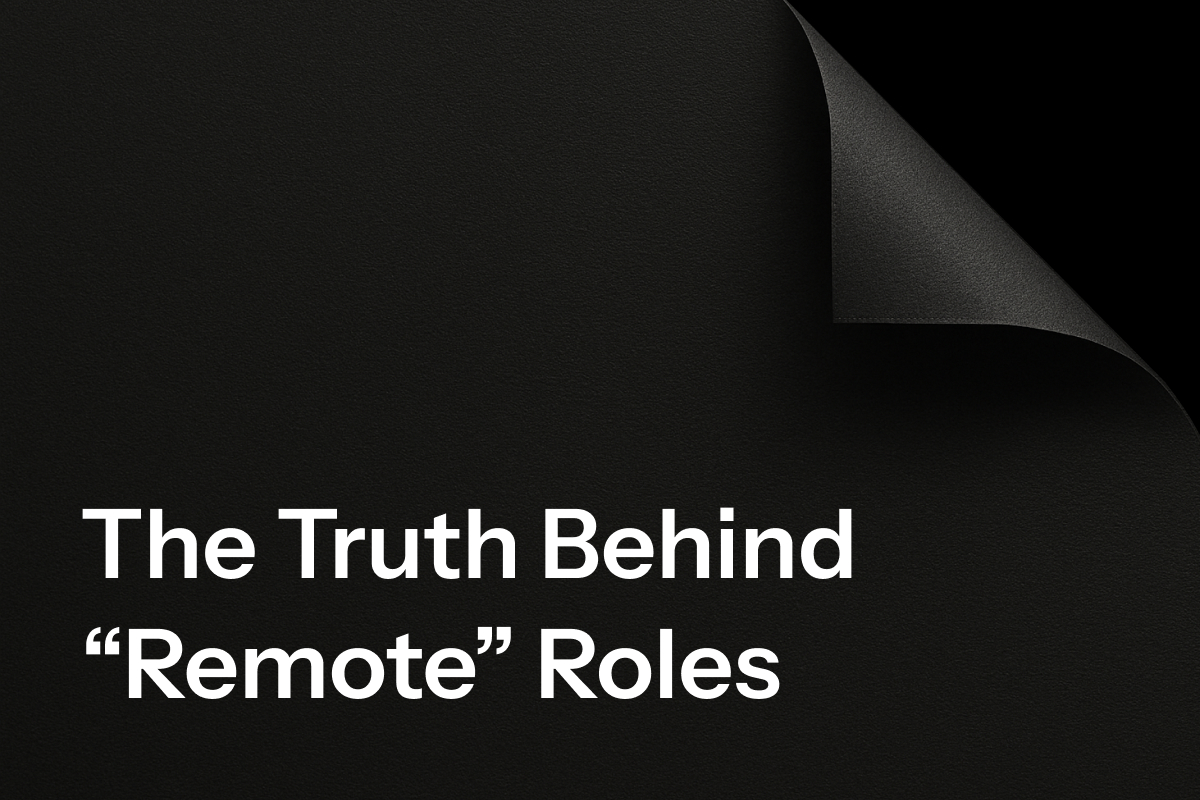Hiring the wrong person can be one of the most costly mistakes a company makes. Beyond the obvious financial losses, a bad hire can negatively impact company culture, team morale, productivity, and even customer relationships. The true cost extends far beyond what appears on a balance sheet.
The Real Impact of a Bad Hire
A few years ago, I placed a woman in an HR and invoicing role without fully considering key aspects of her fit for the company. Evidently, she had the right qualifications and experience. However, what I overlooked was how her working style and personality would clash with the company’s culture. Over time, this misalignment created tension within the team and disrupted workflows in ways that could not be ignored.
- Financial Costs
A bad hire often results in direct financial losses. In this case, errors in invoice processing led to discrepancies that cost the company thousands. Payroll mistakes and vendor payment issues became recurring problems, creating frustration and unnecessary rework for multiple departments. - Cultural and Emotional Damage
The impact of a bad hire on workplace culture is just as significant as financial losses. This employee’s approach to communication and collaboration clashed with the existing team, leading to disengagement and resentment. Team morale suffered, and conflicts increased, which affected overall productivity and job satisfaction. - Productivity Loss
A poor fit in a key role forces colleagues to pick up the slack. Instead of focusing on their responsibilities, employees had to correct mistakes and navigate unnecessary complications. The domino effect of inefficiency ultimately slowed down company operations and hindered progress. - Damage to Reputation
When an employee is responsible for client-facing tasks, a bad hire can hurt a company’s reputation. In this situation, inconsistent invoicing practices led to delayed payments and frustrated business partners. These issues not only strained relationships but also created a perception of unreliability.
How to Prevent This
Prioritize Cultural Fit Alongside Skills: Technical skills can be taught, but a candidate’s alignment with company values and work ethic is harder to change. A strong cultural fit fosters teamwork, reduces friction, and ensures that new employees integrate seamlessly into the company’s workflow. A misalignment, on the other hand, can create disengagement and disrupt morale, ultimately leading to higher turnover rates and lost productivity.
Conduct Thorough Reference Checks: Speaking with previous employers provides deeper insight into how a candidate works within a team. Beyond verifying employment history, reference checks should focus on behavioral traits, reliability, and the ability to handle challenges. Past performance is often a strong indicator of future behavior, and insights from former colleagues or managers can highlight potential red flags before they become costly mistakes.
Look Beyond the Resume: A great resume does not always mean a great employee. Assess soft skills, adaptability, and attitude. Candidates who excel on paper may struggle in real work environments due to poor collaboration skills, resistance to feedback, or lack of motivation. A well-rounded evaluation, including behavioral assessments and situational judgment tests, can help uncover a candidate’s true potential and suitability for the role.
Use a Structured Hiring Process: Having clear hiring criteria and multiple interview stages can help avoid costly mistakes. A structured process ensures that all candidates are evaluated consistently and objectively, reducing the risk of bias or rushed decision-making. Implementing standardized interview questions, skills assessments, and panel interviews can provide a comprehensive view of a candidate’s capabilities and fit within the organization.
Act Quickly When Things Go Wrong: If a bad hire is identified early, addressing the issue promptly can prevent further damage. Usually, ‘the benefit of the doubt’ is far more harmful than it is helpful to the organization. Allowing an underperforming or disruptive employee to remain in a role for too long can demotivate other team members, strain resources, and affect client relationships. Having a structured performance review process and a clear plan for addressing performance issues is crucial for minimizing long-term damage.
Final Thoughts
Hiring the wrong person does not just affect the bottom line; it impacts the entire business ecosystem. A bad hire can lower morale, create workplace tension, and slow down productivity, causing a ripple effect across teams and departments. Conversely, making thoughtful, strategic hiring decisions ensures long-term success and stability. Every hire should be an investment in the company’s future, not a risk that leads to unnecessary setbacks. By refining hiring strategies, prioritizing both technical and cultural fit, and acting decisively when issues arise, companies can build stronger, more resilient teams that drive sustainable growth and success.




